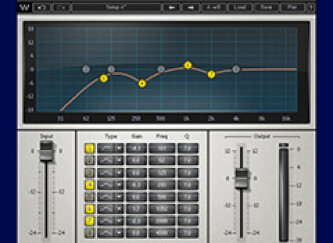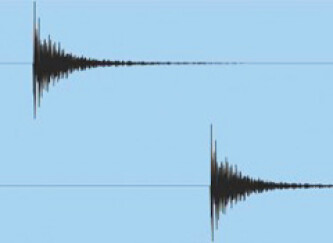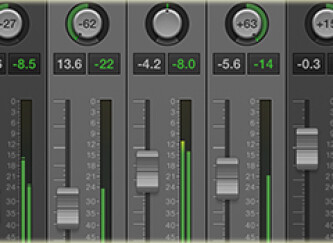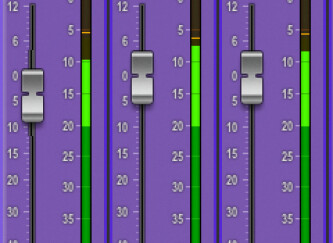
Trim it Down - A guide to mixing music - Part 15
LearningIn this second installment dedicated to using an EQ during mixdown, I'll let you in on another "secret" and then we'll see where to actually start working...

The EQing Primer - A guide to mixing music - Part 14
LearningToday we'll begin to address equalization. But be warned: We'll linger here quite a bit, considering that the EQ is the ultimate mixing tool.

The Match Game - How to use a match EQ to manipulate your audio
LearningA Match EQ is a specialized type of equalizer plug-in that works by extracting the EQ profile from one audio file and applying it to another, so that the latter sounds more like the former. This type…

Demystifying Latency - Understand and minimize latency when recording in your DAW – Part 1
LearningEvery musician doing computer music, regardless of whether he or she is a beginner or a seasoned musician, is confronted with this problem. Audio delays, erratic MIDI management, crackles, and wild p…

On the Level - A guide to mixing music - Part 13
LearningNow that we've dealt with panning in our rough mix, it's time to address the levels. The goal is simply to find a basic balance that allows you to hear each element as clearly as possible, in accorda…

DAW Tips for Tracking - Advice to make recording in your DAW more productive
LearningYour DAW is a powerful piece of software, and the more you can take advantage of its capabilities, the better your results will be. In this article, we offer up an assortment of DAW-related tips to h…

Left, Right and Center - A guide to mixing music - Part 12
LearningAs mentioned in the last installment, we'll start the rough mix by panning the different elements of the mix. To do that, I recommend you an incredibly effective game I discovered several years ago t…

Create a Rough Mix - A guide to mixing music - Part 11
LearningIn the last installment, I gave you an overview of the mixing method I'll be presenting in the upcoming articles. In that workflow, one of the first things you need to do is create a rough mix, and i…

A Method to Your Mixing - A guide to mixing music - Part 10
LearningThis time, I will give you an overview of the mixing method we will follow in the coming weeks. I don't intend it to be "The Method," since there are lots of other ones that are just as valid. Howeve…

Critical Listening - A guide to mixing music - Part 9
LearningBesides guaranteeing "virtual headroom" and an optimal level to process each track with any plug-in or outboard gear, the "gain staging" method described in the last installment also allows you to ma…

Should You Go Paperless Onstage? - The pros and cons of using an iPad to view charts and lyric sheets on the gig
LearningIf you’re one of those performing musicians who needs to bring charts and lyric sheets to the gig or rehearsal, you might want to consider getting rid of all that paper and your music stand, and conv…

It's Your Gain! - A guide to mixing music - Part 8
LearningIn this installment, we will examine the first practical task of your mix, which also happens to be the last purely technical one. Once you've done it, you will finally be able to confront your visio…

Start Small, Think Big - A guide to mixing music - Part 7
LearningFrom what we've seen up to now, we could deduce the following: Mixing can be assimilated to assembling pieces of a 4D puzzle according to a given tempo to form a sonic moving picture. But what can we…

Time Is on Your Side - A guide to mixing music - Part 6
LearningAs eloquent as it may be, the puzzle analogy for mixing conceals a major aspect of music ─ in the end, the puzzle represents only a static image, yet music is essentially dynamic. So it's only natura…

A Mono/Poly Game - Sound synthesis, sound design and audio processing - Part 9
LearningIn the previous articles we saw what makes up a synthesizer's basic sound chain: Oscillators, followed by filters and an amplifier, plus envelopes to control them. We also saw that an oscillator can…

